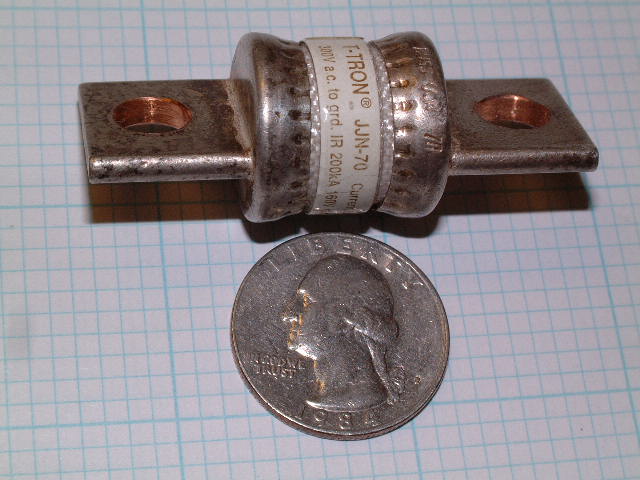|
|
Paul writes:
<<<snip>Eventually, in a few
milliseconds, the regulator will be pumping maximum current through the
field. Since we drive our alternators at 7000-9000 rpm, the alternator
will put out well in excess of 100 volts. Closing through the
alternator-breaker will put this high voltage on your buss. <snip>Here's two things you can do to prevent this and keep
your old avionics. Any time your alternator breaker opens, pull your
field breaker before restoring the alternator's breaker. If you don't
want to depend on your memory in a time of stress, rewire your field
circuit breaker to the alternator side of the alternator breaker.>>
Paul's point is well taken and illustrates the problems that can arise
from unanticipated operating states.
His story begs two questions; Why is there a breaker in the B lead and
why is it tripping?
If Paul's breaker is tripping then it either
means
the breaker is too small or the breaker is defective. In either case
Paul is not getting the full capacity of his alternator delivered to
his electrical system.
Alternators are current limited devices. A 60
amp alternator will pump 60 amps worth of electrons (plus or minus a
couple of amps) through a dead short all day long. You can't get 70
amps out of a 60 amp alternator because either the field windings or
the stator windings or both are magnetically saturated. Limiting a 60
amp alternator to 50 amps with a breaker doesn't do the alternator any
favors. It is like saying you are only going to put 4 gallons in a 5
gallon bucket because you don't want to wear the bucket out. The
alternator was designed for a rated output, let it do its job.
If the wire connecting the B lead to the battery can handle 60 amps
then it too could survive a dead short on the alternator. The problem
comes when the B lead wire gets shorted to ground at the alternator
end. Now you have the full force and authority of the battery pumping
out hundreds of amps worth of electrons through the poor B lead. Doom.
This condition is non-recoverable in flight so a breaker reset should
not be attempted.
The best, lightest and cheapest alternative is the Bob Nuckolls'
approach of putting a cartridge fuse (see picture) in series with the B
lead near the battery. I put in a 70 amp fuse for my 60 amp (28 volt)
alternator. When I built my airplane ('94) I bought two fuses, one to
install and one as a spare. I still have the spare.
Regards
Brent Regan

DSCF2500.JPG
|
|